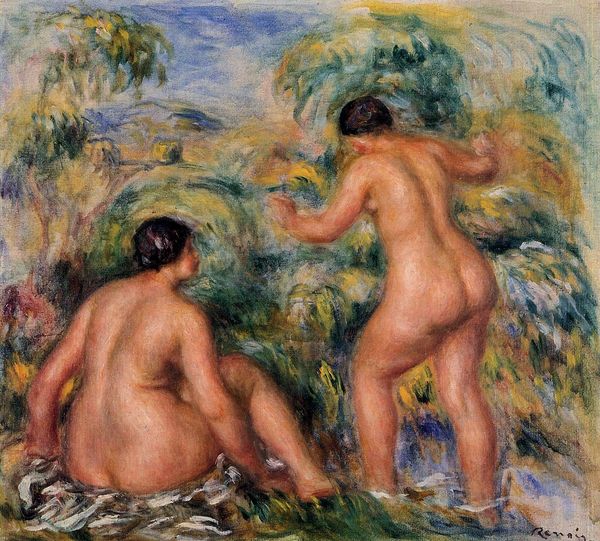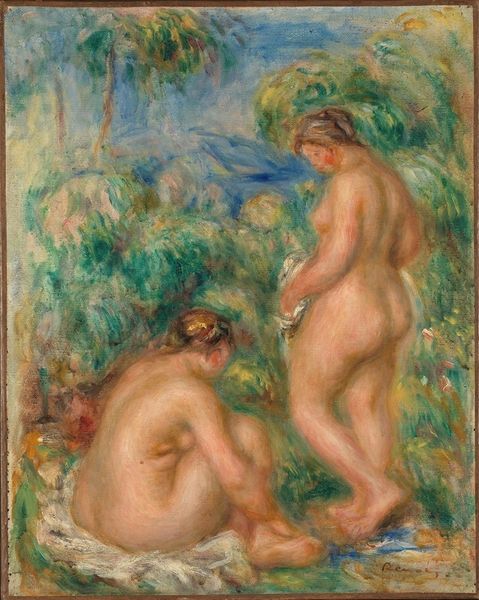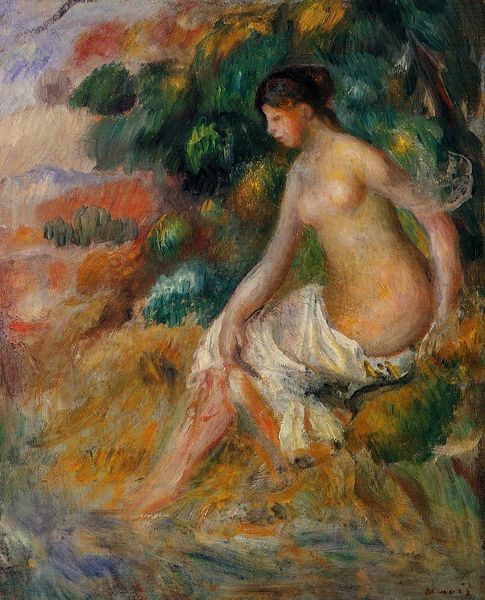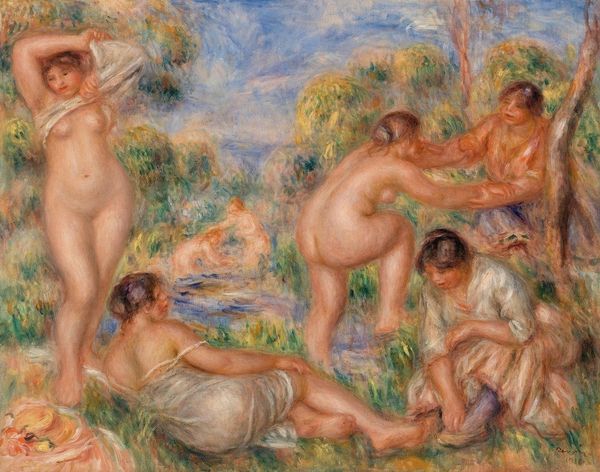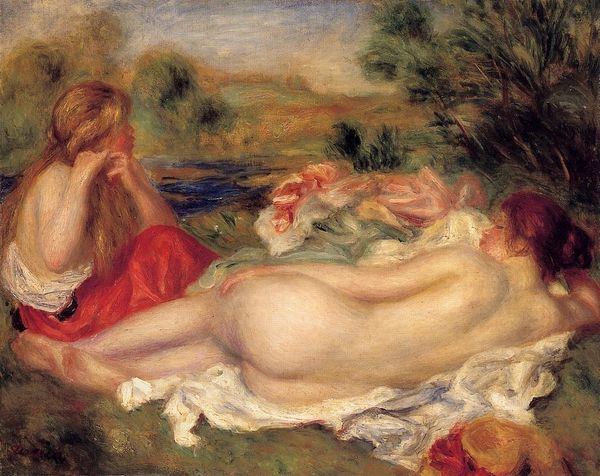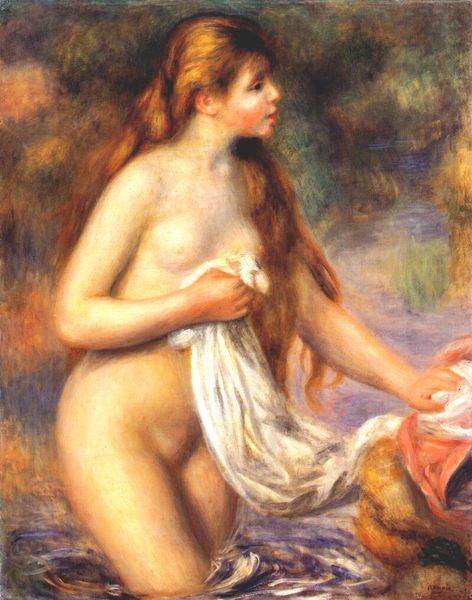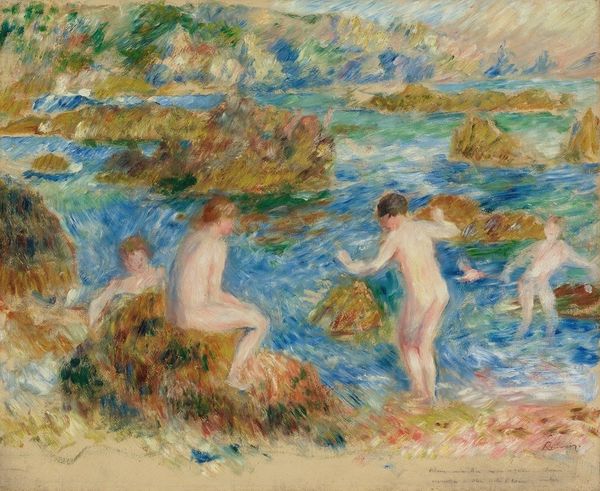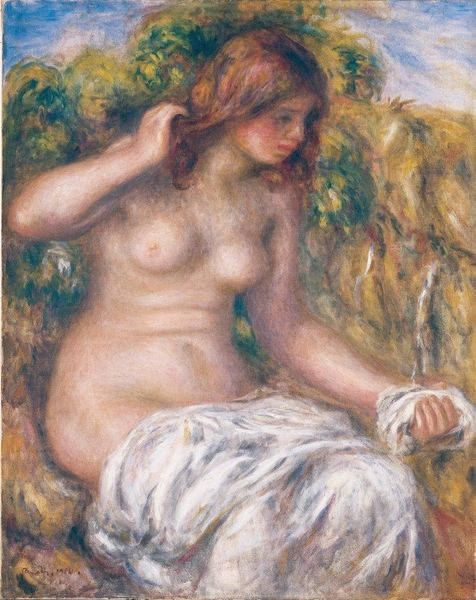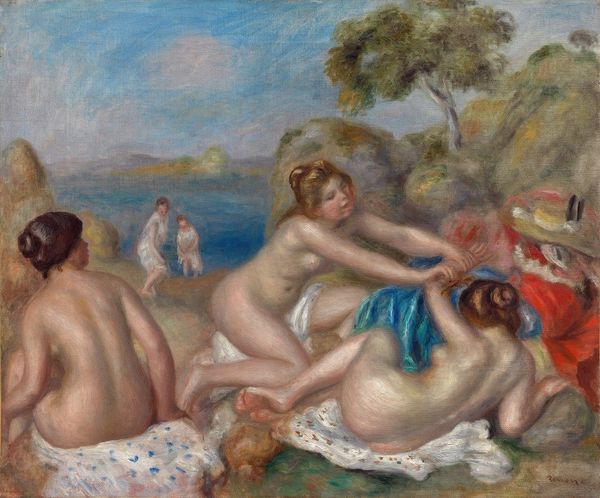
Copyright: Public domain
Editor: This is Pierre-Auguste Renoir's "Women Bathing" from 1915, made with oil paint, featuring impasto application in what could be termed the post-Impressionistic style. I am immediately struck by the seeming innocence and freedom of the depicted women in nature, a departure from traditional academic nudes that I have always found a little off-putting due to the sexualized nature of the art establishment. How do you interpret the positioning of these women, especially regarding its art-historical context? Curator: It is intriguing how Renoir returns to this theme later in his career, deliberately moving away from the fleeting moments of Impressionism toward something more classical and timeless, almost sculptural, which is likely a reflection of a post-war societal need to turn away from reality, but with implications to who it reflects. The art world itself was shaped by patronage. Think about who could afford art and whose tastes shaped artistic expression and trends. Editor: That’s a great point; these works must have appeared very exclusive and divorced from everyday life given the setting and style! Curator: Precisely! The nude bathing in an idealized, timeless landscape can be seen as appealing to a desire for escaping the rapidly changing, often unsettling, social realities. Note too how Renoir almost dissolves their individuality into the landscape itself. This universalization tends to gloss over the complexities and lived experiences of real women, in favor of perpetuating classical ideals accessible mostly by upper-class men. What implications do you suppose this has for modern exhibition? Editor: So the figures themselves contribute to this idealized narrative. We ought to question the narratives surrounding the painting during an exhibition so people don't assume an innocence of form divorced from power structures and societal values. That would lead to an insightful exhibition that challenges conventions while celebrating artistic accomplishments. Curator: Precisely! A modern lens, a socio-political context can change the narrative and invite audiences to reflect not just on artistic technique but on power, representation, and social construction of beauty and art itself. This understanding will hopefully create not just critical viewers, but better world citizens!
Comments
No comments
Be the first to comment and join the conversation on the ultimate creative platform.
